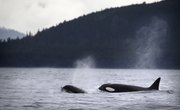
Adaptation theory, also known as survival theory or survival of the fittest, is an organism's ability to adapt to changes in its environment and adjust accordingly over time. Adaptations occur over generations of a species with those traits that help an individual animal eat and mate most profusely being passed down from generation to generation until the whole species changes to be better suited to their environment.
History
The most famous scientist associated with adaptive theory is Charles Darwin whose studies in the 1830s in the Galapagos Islands established a fixed relationship between organism and its habitat. Before Darwin, other scientists such as Empedocles, Aristotle, William Paley, Lamarck and Buffon accepted that fact that species changed, but didn't fully understand the reason behind the changes or that adaptation was a continual process without a final form. Adaptation theory proposed three changes when habitat changes: habitat tracking, genetic change or extinction. Of the three, only genetic change is the adaptation.
Habitat Tracking and Extinction
Habitat tracking is when a species follow a habitat change or find another environment similar to the one it lived in before. When a species is unable to move or change, the result is the species dying out or becoming extinct.
Genetic Change
Genetic change is when natural selection allows the animal with slight mutations to have an advantage over the rest of the population, giving them the best access to food and mates. For example, Darwin noticed the turtles on two of the islands he studied. One turtle population ate food that was low to the ground. These turtles had short legs and straight shells. When the turtles migrated to another island, the food source was much higher up. Turtles who had longer legs survived. Over time, their necks also grew and their shells became rounded with a large groove in front for stretching to reach the food. The entire population on the new island grew to include these adaptations in their species.
Co-Adaptations
In cases where two or more species are symbiotically bound to each other for survival, co-adaptations must occur. One species makes an adaptation; the other species must follow suit to continue the mutually beneficial relationship. Similarly, if one species dies completely, the surviving species can try to adapt quickly but usually dies out, too.
Internal Adaptations
Sometimes adaptations can occur internally and not be seen outside the body. Some examples of this would include vertebrates adapting to be able to regulate their body temperatures. Another example would be a species developing an more extensive immune system or improving their brain function.
About the Author
Susan King is a teacher with 27 years experience with all ages, grade levels and ability levels, including teaching in China. She has written a book, "The Road to Rebecca," about adopting from China. She graduated from Texas A&M University. She also has a ThM from Colorado Theological Seminary in Christian Counseling and recently received her PhD.
